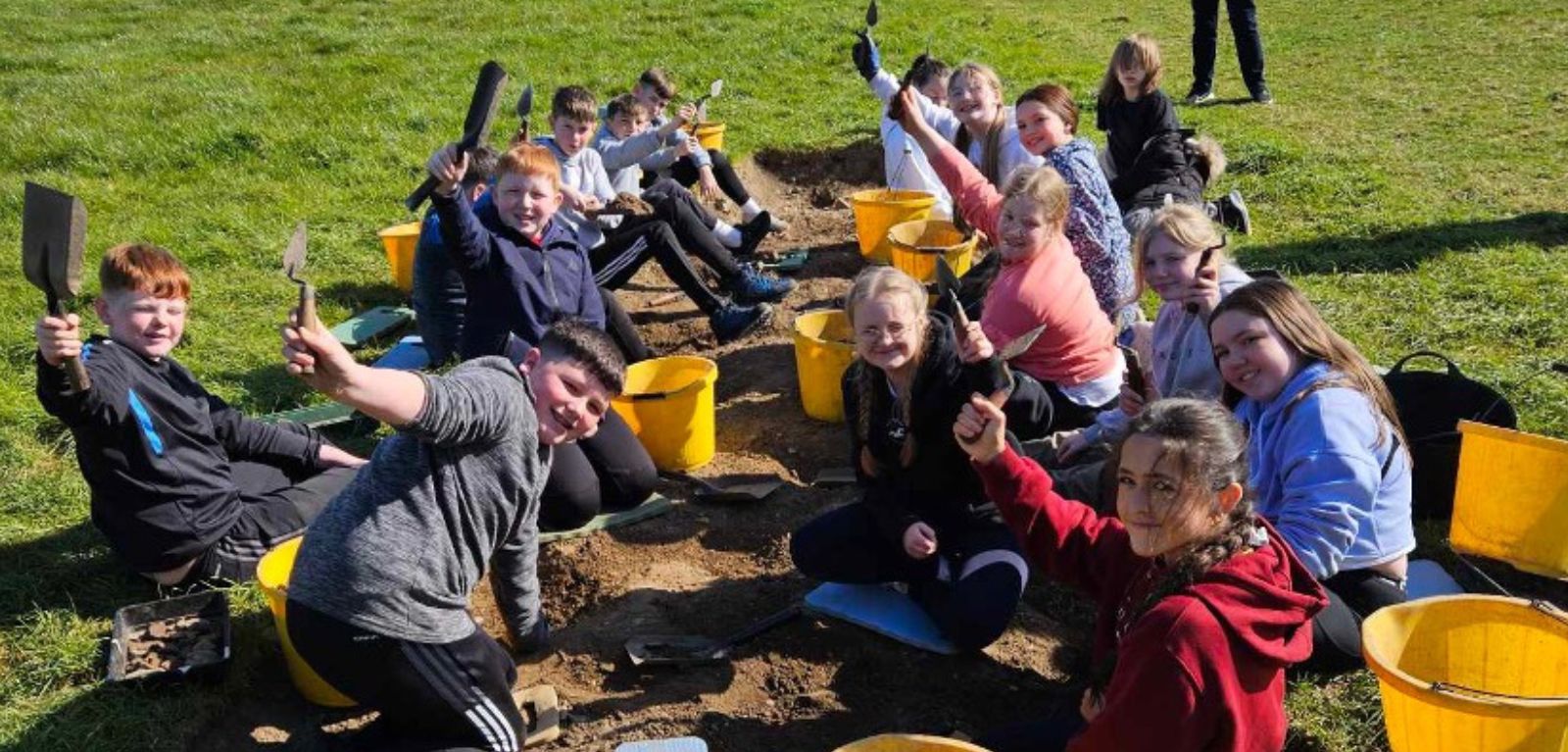Queen’s researchers join team of volunteers and school children to uncover 12th century monastery
A group of archaeologists from Queen’s have teamed up with volunteers and school children to uncover the site of a 12th century monastery near Downpatrick.

During a two-week excavation, the team found sections of a wall, pottery, bone and slate, as well as a 13th Century coin.
The Cistercian monastery, known as Erenagh, was destroyed in 1177 by Anglo-Norman knight John de Courcy during an invasion of Ulster.
Brian Sloan from the School of Natural and Built Environment at Queen’s led the excavation, which was organised by the Community Archaeology Programme Northern Ireland (CAPNI) and funded by a grant from the National Lottery Heritage Fund.
Two-week excavation
He says: “We are delighted to have completed a very successful two-week excavation at Erenagh, near Downpatrick. Alongside a great group of enthusiastic school children and dedicated volunteers of all ages, we’ve been able to find some fascinating items and give a real insight into the history of Erenagh.”
Based on the results of a geophysical survey carried out in February 2024, three areas which suggested archaeological activity were pinpointed.
Brian explains: “During the excavation we found the rubble foundations of a substantial wall and a deep, straight sided feature that may be an infilled souterrain (an underground cellar usually used for storage or refuge) or even a latrine, which is a communal toilet.
“We also found some pottery which we think could date to the Early Medieval period, as well as flint and pottery dating to the Bronze age.”
“One of the volunteers also found a fine medieval coin dating to the reign of Henry 3rd (1216-72 AD) and the team found an iron furnace which was filled to the brim with iron slag (the waste product of smelting iron). We’ll now take this back to the lab to do some radiocarbon dating and find out more about how this relates to the medieval monastery.”
Future archaeologists
Aoife Hagan, who is a pupil from Killyleagh Integrated Primary School, says: “I’ve enjoyed the digging the most and finding stuff to put in the finding trays up in the hut, where we learned about the artefacts.”
Cathal Kearney, also a pupil from Killyleagh Integrated Primary School, comments: “This has inspired me to maybe in the future to be an archaeologist.”
Brian adds: “It was a fantastic investigation in great weather with wonderful people! We are thankful to the landowner Mr Brian Edgar for facilitating the excavation and being so hospitable to the Queen’s archaeologists and volunteers over the two weeks!”
Media
For media enquiries, please contact emma.gallagher@qub.ac.uk